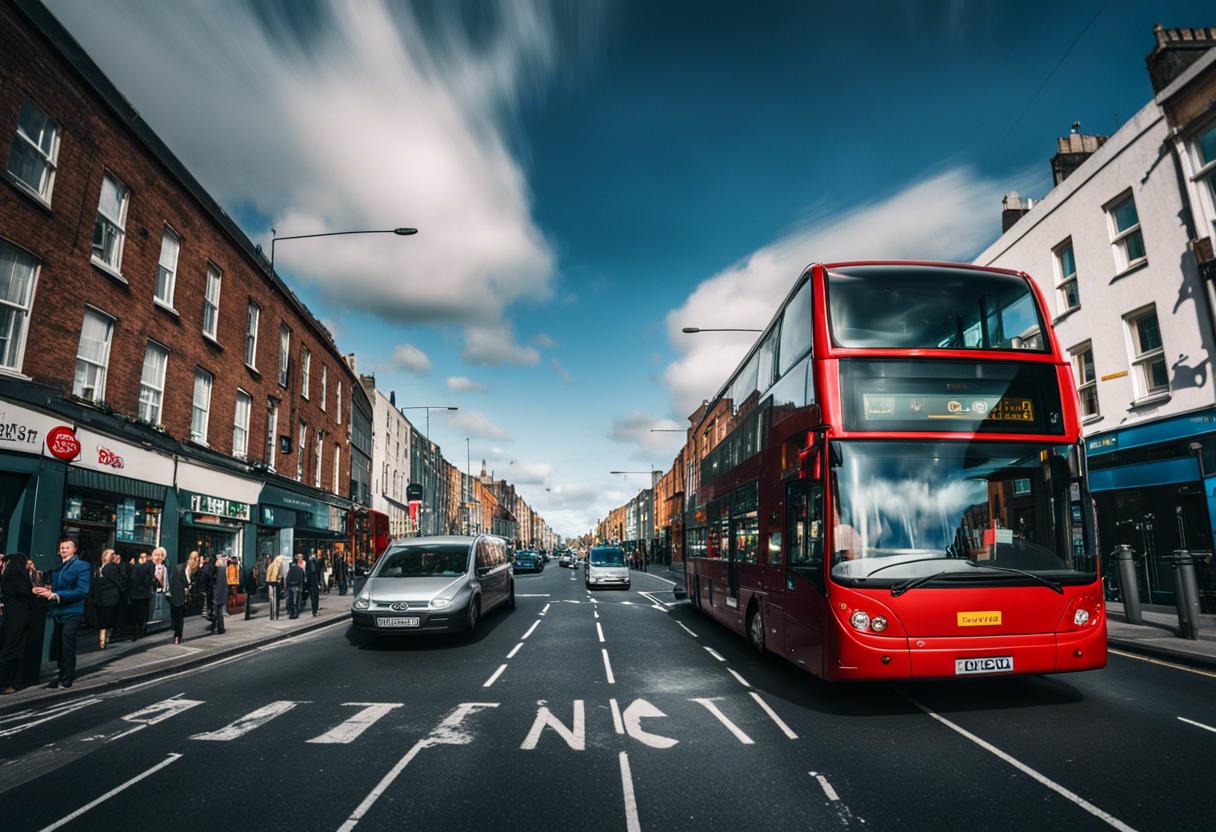Traffic limitations set up in central Dublin less than a fortnight ago have already shown beneficial results for those utilising public transport. It appears that bus travellers have profited the most from the decreased congestion on the banks of the River Liffey.
Private and commercial vehicles have been prohibited from direct east-west travel along the Liffey on either side of O’Connell Bridge, between 7am and 7pm daily since the 25th of August.
On the northern banks, vehicles on Bachelors Walk must make a left turn on to O’Connell Street, as going straight on to Eden Quay towards Dublin Port is not allowed. Likewise, private cars are already prevented from making a right turn from Bachelors Walk onto O’Connell Bridge towards the southern part of the city.
On the south side, it’s not allowed to drive straight from Burgh Quay to Aston Quay. Even the left turn from Westmoreland Street to Aston Quay is restricted only to public transport and cycles.
City car parks remain open, and drivers can still cross any currently active Liffey bridge. These actions combine to form part of the Dublin City Centre Transport Plan; aimed at “removing traffic that has no city-bound destination”, given that 60 per cent of drivers are currently just passing through the city rather than stopping.
The plan also intends to significantly boost the reliability of bus services and create a “low-traffic atmosphere” in preparation for the expansion of the BusConnects initiative and the construction of the MetroLink train line.
New traffic measures are still settling in, but according to Dublin Bus CEO Billy Hann, bus services on the quays saw an immediate improvement. Hann enthusiastically affirmed that early signs are highly promising, stating that the quays are functioning smoothly and are being closely monitored daily by numerous inspectors.
During the last week of August, limitations were enacted at a time when city traffic is typically minimal. There was speculation that as we entered September, this could escalate the congestion. However, Mr Hann has stated this hasn’t occurred. It was an assumption that traffic might be sparse in the initial few days, but having observed the situation on a Monday, he found it to be on par with the week the restrictions were implemented.
Still, he stresses that these are just observations and aren’t backed by proper data yet. Dublin Bus will, in the coming months, compile data to provide a thorough analysis of the measures to be presented before a Dublin City Council task group.
Mr. Hann noted that each bus in the city is tracked allowing a clear understanding of their speed and transit time from one end of the quays to the other. This will enable comparisons of time taken pre and post the new measures.
He also added that Dublin Bus will examine if the quays’ restrictions have any undesired impacts on the bus schedules in surrounding areas. “We will need to analyse the redirected traffic to check if it affects other regions”, he added. However, so far the feedback from the drivers on the routes has been anything but negative.
The bus inspectors on the quays initially reported moderate non-compliance by private car owners, but there has been daily improvement and hope this will eventually cease.
Bus Éireann also reported initial evidence of improved transit times through the area since the restrictions implementation on 25 August. It welcomes the prohibitions on private vehicles and supports the notion of heightened bus prioritisation.
The new traffic restrictions have brought mixed reactions amongst local taxi and delivery drivers. Notably, taxi drivers applaud the improved travel times along the quays. Cab driver Paul May remarks that the decreased traffic in the area is a significant benefit for drivers, while fellow taxi driver Michael McCarthy attests to a smoother drive down the quay, even claiming to shave minutes off his usual route between Christchurch and O’Connell Bridge. However, McCarthy did observe additional traffic on the secondary streets, balancing the improved quayside travel speed.
On the other hand, delivery drivers have expressed dissatisfaction with these changes. Declan Sheelan, who makes his rounds in Temple Bar, argues the new plan to be disastrous for those needing access to the city centre, stating a potential setback of approximately 45 minutes to one hour. Tradesman Liam Kilfoyle believes the restrictions will discourage his peers from working in the city due to increased travel hours which inevitably increase costs for clients seeking their services. Kilfoyle suggests a compromise of imposing traffic limitations on the weekends, allowing businesses to function normally during weekdays.
Meanwhile, supporters such as wholesale butcher John Young, who supplies several hotels and restaurants, sees these measures as beneficial. He appreciates the more fluid traffic, which suits his supply routes well. Moreover, Young notes that the easing of traffic congestion along both banks of the River Liffey certainly helps his endeavours. Thus, the impact of these restrictions, it seems, largely depends on one’s perspective and needs.
Wojciech Korzan, tasked with supplying fish to eateries in the city centre, has encountered greater challenges in navigating the area. “While I get the need for traffic restrictions, it’s essential they accommodate delivery drivers as well,” he argues. He suggests a solution similar to Capel Street, where entry is allowed until 11am. From his perspective, supplying food to tourists, especially a favourite like fish and chips, is crucial in a city known for its tourism.

